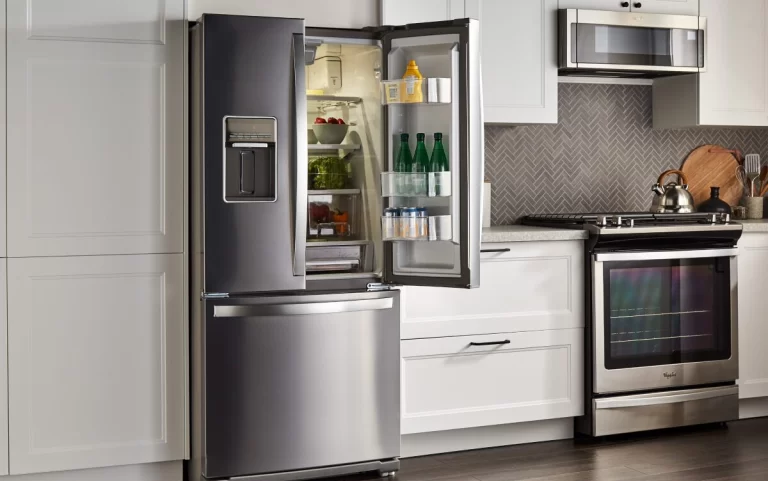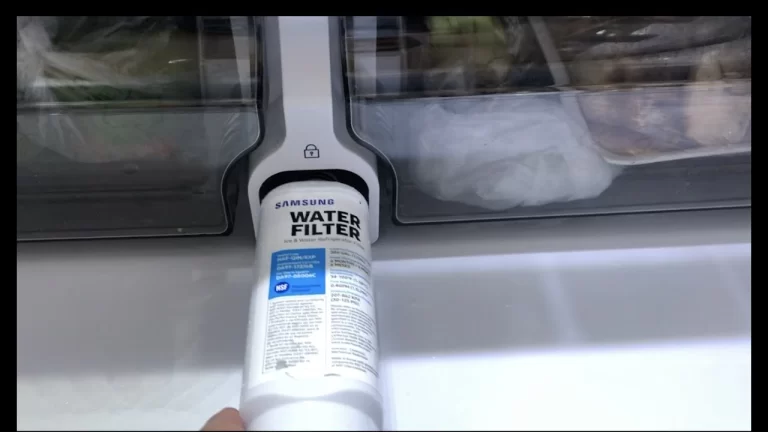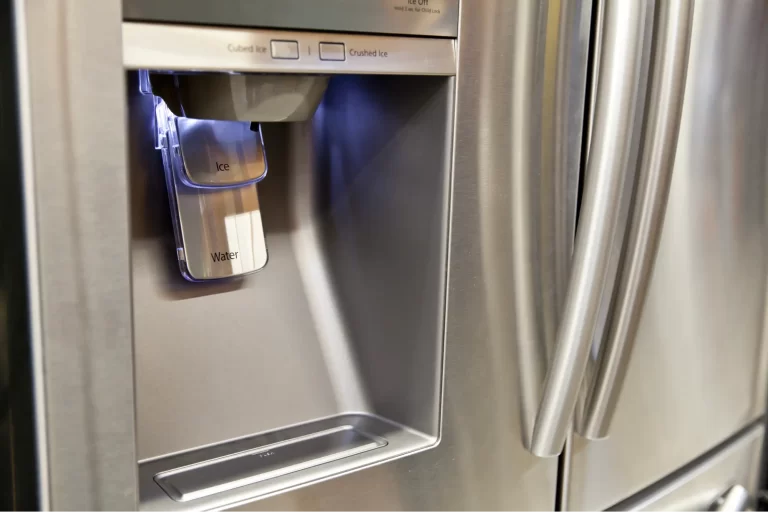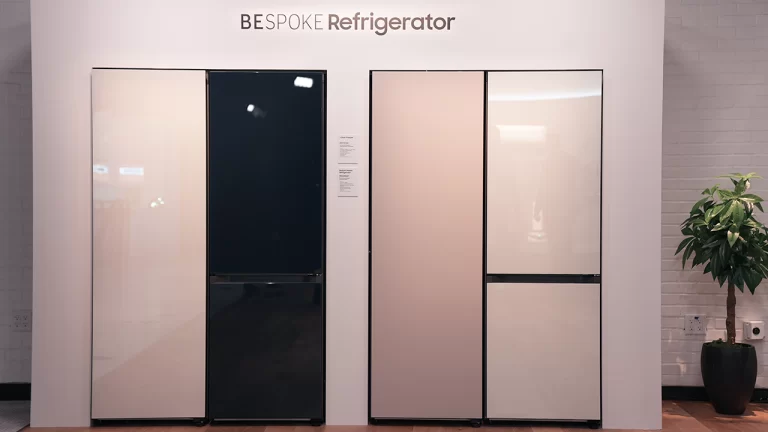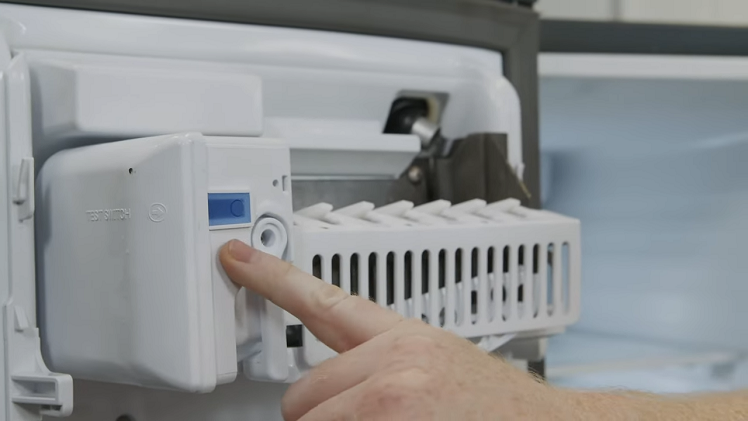Having a Samsung refrigerator with a non-functioning ice maker while the water dispenser still works can be a perplexing issue. Thankfully, there are various potential causes and troubleshooting steps that can help resolve the problem.
In this comprehensive guide, we will explore the common reasons behind a Samsung refrigerator not making ice, such as incorrect freezer temperature, defective water inlet valve, low water pressure, blocked water lines, and faulty ice maker assemblies.
By understanding these possible issues and implementing the suggested solutions, you’ll be on your way to restoring the ice-making functionality in your Samsung refrigerator. So, let’s dive in and troubleshoot the perplexing ice-making dilemma together!
If your Samsung fridge’s ice maker isn’t working but the water dispenser is, check the following: Ensure the freezer is below 10°F, the water inlet valve is functional, and water pressure is adequate. Clear ice blockages, inspect the ice maker assembly and motor, and confirm the ice maker is on.
| Issue | Fix |
| Freezer temperature above 10°F | Adjust the freezer temperature to 0°F to 5°F (-18°C to -15°C) |
| Defective/clogged water inlet valve | Replace the inlet valve if defective/clogged |
| Low water pressure (under 20 psi) | Adjust the water pressure to 20 psi or higher |
| Ice-blocked water line | Unblock the water line with warm water or a hairdryer |
| Failed ice maker assembly | Replace the ice maker if it’s faulty (test it with a multimeter) |
| Failed motor | Replace the faulty auger motor |
| The ice maker is off | Ensure you switch the ice maker on |
| Defective ice maker sensor | Replace the defective ice maker sensor |
| Clogged ice maker fill tube | Clear the blockage in the fill tube with warm water or a hairdryer |
Why Is My Samsung Ice Maker Not Working But Water Does? (9 Reasons)
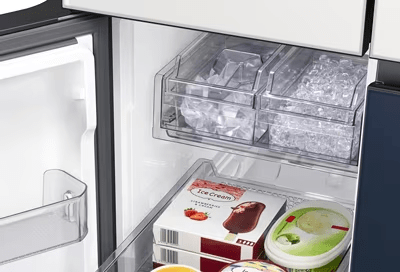
1. Incorrect Freezer Temperature
The freezer temperature in a Samsung refrigerator is crucial for proper ice production. If the temperature is set too high, above the recommended range of 0°F to 5°F (-18°C to -15°C), it can hinder the ice-making process. At higher temperatures, the ice maker may not be able to freeze the water effectively or may struggle to maintain the ice cubes’ integrity. As a result, ice production can be limited or the ice cubes may melt before being dispensed.
To fix this issue, check the freezer temperature settings on your Samsung refrigerator. Adjust the settings to ensure they fall within the recommended range. It’s also important to clean the condenser coils regularly to allow proper heat exchange, as dirty coils can lead to insufficient cooling and impact ice production. Additionally, ensure the condenser fan is functioning correctly to help circulate cold air throughout the freezer compartment and maintain a consistent temperature.
2. Defective Water Inlet Valve
The water inlet valve is responsible for controlling the flow of water into the ice maker. If this valve becomes defective or gets clogged with sediment or mineral deposits, it can restrict the water supply to the ice maker, leading to a lack of ice production.
To address this issue, you can test the water inlet valve using a multimeter to check for continuity or power. If the valve fails the test or appears visibly clogged, it should be replaced. It’s essential to consult the user manual or seek professional assistance to ensure you select the correct replacement valve for your specific Samsung refrigerator model.
Learn how to reset: Samsung refrigerator ice maker reset
3. Low Water Pressure
Insufficient water pressure is another common cause of a Samsung refrigerator not making ice. The water inlet valve typically requires a minimum water pressure of 20 psi to function properly. If the water pressure is below this threshold, it can impede the water flow to the ice maker, resulting in reduced or no ice production.
To resolve this issue, you can measure the water pressure using a water pressure gauge. Check the water pressure of both your home’s water supply and the refrigerator’s water supply. If the pressure is below 20 psi, you should investigate and address any kinks, bends, or blockages in the water supply line. Additionally, ensure the main water valve is fully open and supplying adequate pressure to the refrigerator.
4. Blocked Water Line
Over time, water residuals or sediment can accumulate and freeze within the water line, obstructing the water flow to the ice maker. This blockage prevents the ice maker from receiving the necessary water supply, leading to a lack of ice production.
To address a blocked water line, you can start by moving the refrigerator away from the wall and unplugging it. Locate the shut-off valve on the water line and turn it off. Once the water supply is shut off, you can use warm water to gently pour down the water line to melt the ice blockage.
Alternatively, you can use a hairdryer on low heat to thaw the ice blockage or simply leave the refrigerator unplugged for a couple of hours to allow the ice to melt naturally. Once the blockage is cleared, plug the refrigerator back in and move it back to its original position.
Check : Ge profile refrigerator ice maker reset
5. Faulty Ice Maker Assembly
The ice maker assembly consists of various components, including the water line, inlet valve, motor, and sensors, working together to produce ice. If any of these components are faulty or damaged, it can affect the overall ice-making process and result in no ice production.
Before concluding that the ice maker assembly is the problem, it’s essential to check other potential issues such as the water inlet valve, water line, and motor. However, if all other components are functioning correctly, you can use a multimeter to test the ice maker assembly for continuity. If it fails the test, it indicates a faulty assembly that needs to be replaced.
The ice maker assembly is typically located next to the ice mold, and replacing it may require disassembling parts of the refrigerator. It’s recommended to consult the user manual or seek professional assistance for this task.
Learn: Samsung refrigerator ice maker problems
6. Malfunctioning Auger Motor
The auger motor is responsible for stirring and dispensing the ice from the ice maker. If the auger motor is faulty or not working correctly, it can lead to a lack of ice production, even if the water dispenser is functioning correctly.
You can identify a faulty auger motor if it produces loud noises but does not dispense ice. In such cases, it’s recommended to replace the auger motor. If you are unsure about identifying or replacing the motor, it’s advisable to contact a Samsung fridge expert or a professional technician for assistance.
7. Ice Maker Turned Off
It may seem obvious, but sometimes the ice maker can be accidentally turned off, causing a halt in ice production. Different Samsung refrigerator models have different methods for turning on the ice maker.
For top-freezer units, there is typically an “ice on” icon that can be touched to turn the ice maker on if it was previously turned off. In family hub units, the ice maker can be activated using the “fridge manager” application. For models with dual ice makers, there may be an “ice off” button that needs to be switched on.
If the ice maker does not turn on after performing the necessary steps, you can try resetting it by referring to the user manual or contacting Samsung customer support for specific instructions.
Read More: GE refrigerator water dispenser not working after replacing filter
8. Defective Ice Maker Sensor
The ice maker sensor plays a crucial role in detecting the ice level within the ice bin. If the sensor is malfunctioning, it may not accurately detect when more ice is needed, resulting in a lack of ice production.
To address this issue, visually inspect the ice maker sensor for any signs of damage or misalignment. If it appears damaged or out of position, it may need to be replaced to restore proper functionality. Again, it is advisable to consult the user manual or seek professional assistance for sensor replacement.
9. Clogged Ice Maker Fill Tube
The fill tube carries water from the water inlet valve to the ice maker mold, allowing ice cubes to form. If the fill tube becomes clogged with debris or ice, it can obstruct the water flow, leading to a lack of ice production.
To resolve this issue, you can inspect the fill tube for any blockages. If it is clogged, you can use warm water to melt the ice or debris and clear the tube. Gently pouring warm water down the tube or using a hairdryer on low heat can help remove the blockage. It’s important to be cautious when using water or a hairdryer near electrical components and ensure the refrigerator is unplugged during this process.
Remember, if you are unsure or uncomfortable with troubleshooting or repairing your Samsung refrigerator, it is always best to consult the user manual, contact Samsung customer support, or seek assistance from a professional technician to avoid any potential damage to the appliance.
How to Reset Your Samsung Ice Maker That’s Not Working?
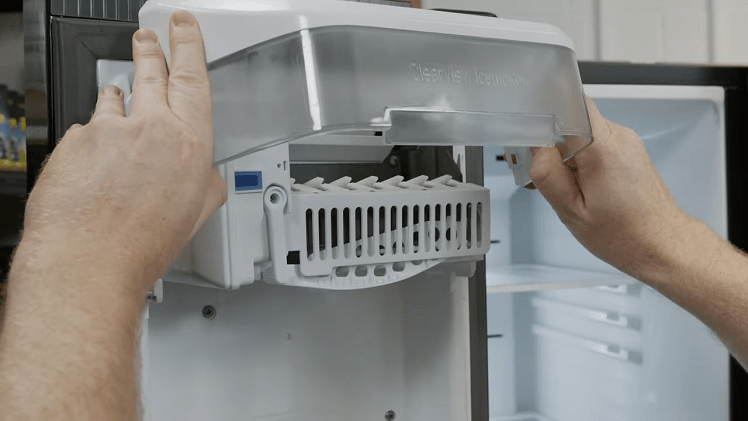
Step 1: Identify the Reset Button or Switch
Locate the ice maker in your Samsung refrigerator, usually found in the freezer compartment or on the left side of the fridge.
Look for a small reset button or switch on or near the ice maker. Some models may require removing the ice bucket to access the reset button.
Step 2: Press and Hold the Test Button
If your Samsung refrigerator has a test button, press and hold it for about 10 seconds until you hear a chime or other indication that the ice maker has been reset.
Return the ice bucket to its original position.
Step 3: Unplug the Refrigerator
If your Samsung refrigerator does not have a dedicated reset button, or if the above method didn’t work, you can try resetting the entire unit.
Unplug the refrigerator from the power source and wait for 30 to 60 seconds to ensure a complete power cycle reset.
Interesting Read: GE side by side refrigerator not cooling but freezer is working
Step 4: Plug in the Refrigerator
Plug the refrigerator back into the power source after the designated waiting time.
The power cycle reset will help refresh the settings and may resolve any temporary issues with the ice maker.
Step 5: Wait for Ice Production
After resetting the ice maker, give it some time to start producing ice. It typically takes around 24 to 48 hours for the ice maker to complete a full cycle and begin dispensing ice.
Monitor the ice production by checking the ice bin periodically.
Step 6: Contact Samsung Support if Necessary
If the reset process does not resolve the issue and the ice maker still does not work, it is advisable to contact Samsung’s customer support or schedule a service appointment with a technician. They can provide further assistance and guidance to troubleshoot and repair the ice maker in your Samsung refrigerator. Contact Samsung Support
Tips for Preventive Maintenance
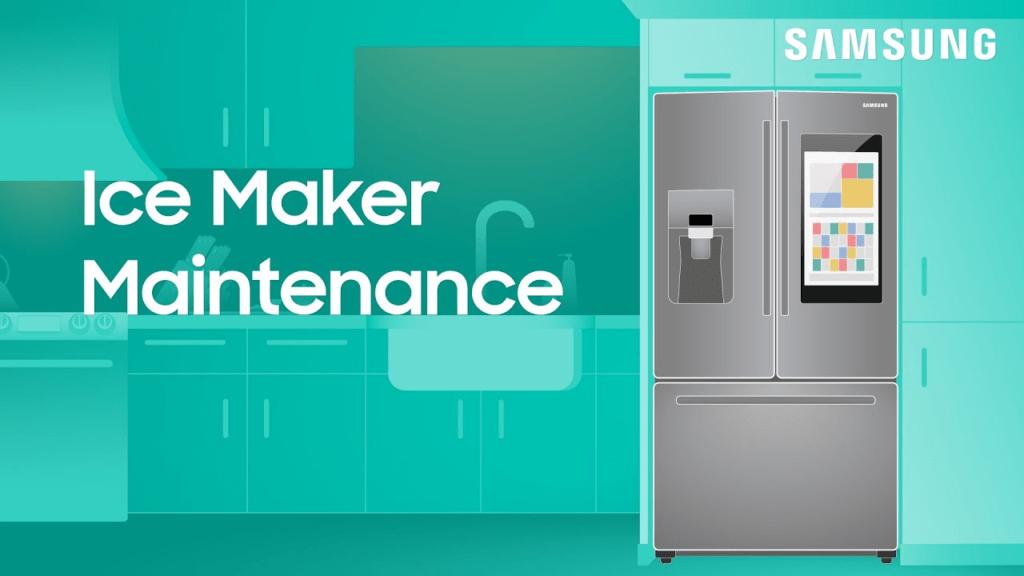
- Regularly Clean the Ice Maker Components: Periodically clean the ice maker components to prevent the accumulation of dirt, debris, or mineral deposits that can hinder proper ice production. Use a mild cleaning solution and a soft cloth to clean the ice mold, water reservoir, and ice bin.
- Check and Replace Water Filters: Check the water filters in your Samsung refrigerator regularly and replace them as recommended by the manufacturer. Clogged or dirty filters can restrict water flow to the ice maker, affecting its performance.
- Avoid Overloading the Ice Bin: Be mindful of not overfilling the ice bin beyond its capacity. Overloading can lead to ice cubes sticking together or obstructing the ice maker’s mechanism, reducing its efficiency.
- Inspect Water Supply Line: Routinely inspect the water supply line connected to your refrigerator. Look for any signs of kinks, bends, or leaks that could affect water flow to the ice maker. If you notice any issues, promptly address them to ensure an uninterrupted water supply.
- Keep Freezer Temperature Consistent: Maintain a consistent freezer temperature within the recommended range of 0°F to 5°F (-18°C to -15°C). Fluctuating temperatures can impact ice production and the overall performance of the ice maker. Regularly monitor and adjust the freezer temperature as needed.
Read More: GE profile refrigerator not cooling or freezing
- Avoid Blockages in the Water Line: Take preventive measures to avoid blockages in the water line. Use a water softening system if you have hard water to minimize mineral buildup. Additionally, ensure the water line is not obstructed by items or debris behind the refrigerator.
- Follow Manufacturer’s Guidelines: Refer to the user manual or manufacturer’s guidelines specific to your Samsung refrigerator model for additional maintenance recommendations. The manual may include model-specific instructions for cleaning, maintenance schedules, and other useful tips.
By following these preventive maintenance tips, you can help ensure the optimal performance and longevity of your Samsung refrigerator’s ice maker. Regular maintenance reduces the chances of encountering issues and enhances the overall ice-making experience.
FAQs
Why is my Samsung refrigerator not making ice but the water dispenser works fine?
There could be several reasons why your Samsung refrigerator is not making ice while the water dispenser is still functioning properly. Some common causes include incorrect freezer temperature, a defective water inlet valve, low water pressure, a blocked water line, or a faulty ice maker assembly. Troubleshooting these potential issues can help identify the exact cause and resolve the ice-making problem.
How can I adjust the freezer temperature on my Samsung refrigerator?
To adjust the freezer temperature on your Samsung refrigerator, follow these steps:
- Locate the control panel on the front of the refrigerator or inside the fridge compartment.
- Look for the temperature adjustment buttons or dials.
- Use the buttons or dials to decrease the freezer temperature to the recommended range of 0°F to 5°F (-18°C to -15°C).
- Monitor the temperature for a few hours to ensure it stabilizes at the desired setting. Adjust as needed.
Learn more: GE monogram refrigerator problems
What should I do if my Samsung refrigerator’s water inlet valve is defective?
If you suspect that the water inlet valve in your Samsung refrigerator is defective, follow these steps:
- Consult your refrigerator’s user manual or contact Samsung customer support to identify the exact location of the water inlet valve.
- Use a multimeter to test the valve for continuity or power. If there is no continuity or power, it indicates a defective valve.
- Purchase a compatible replacement valve from a reputable retailer or directly from Samsung.
- Follow the instructions provided in the user manual to safely replace the water inlet valve.
How can I check the water pressure in my Samsung refrigerator?
To check the water pressure in your Samsung refrigerator, perform the following steps:
- Obtain a water pressure gauge suitable for measuring household water pressure.
- Locate the water supply line connected to your refrigerator.
- Attach the water pressure gauge to the water supply line.
- Turn on the water supply and allow the pressure gauge to measure the water pressure.
- Ensure that the water pressure is at least 20 psi or higher for proper functioning of the water inlet valve and ice maker.
Can a blocked water line be the reason for my Samsung refrigerator not making ice?
Yes, a blocked water line can prevent your Samsung refrigerator from making ice. Over time, water residuals or debris can accumulate and freeze within the water line, obstructing the water flow to the ice maker. To address this issue, you can unblock the water line by moving the refrigerator away from the wall, turning off the water supply, and using warm water or a hairdryer to thaw the ice blockage. Always ensure the refrigerator is unplugged and exercise caution when using water or heat near electrical components.
Summary
We saw how if your Samsung refrigerator is not making ice but water works, you might need to troubleshoot a few things. Check if the freezer temperature is between 0°F to 5°F. Ensure the water inlet valve isn’t clogged or defective. Assess the water pressure, and clear any frozen water lines. Inspect the ice maker assembly for any faults. Following these steps should help resolve your ice maker issues.


